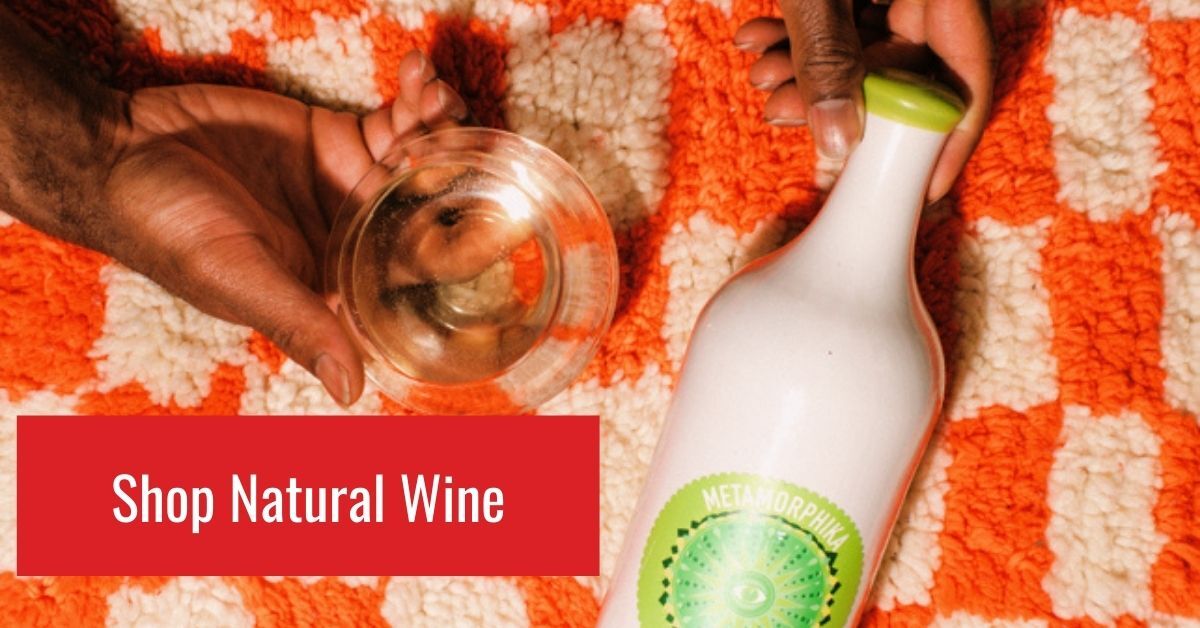As the weather warms up people are starting to pop bottles of chilled rosé and enjoy the sunshine. Rosé has been a mainstay of spring/summer in the United States for years, and it’s definitely here to stay. But what about its cousin, the lesser-known style of wine known affectionately (or not depending on who is saying it) as orange wine? In this article we’ll delve deep into orange wine vs rosé, and hopefully help dispel any myths about it.
Listen to the Podcast Below
What Is Orange Wine and What Is Rosé?
For some people, orange wine is literally wine made with oranges. We haven’t tried our hand at orange winemaking yet, but if you have, let us know in the comments! For most, however, orange wine (also known as amber, or skin contact white wine) is a style of wine in which you allow white wine grapes to have contact with the skins and potentially seeds for a period of time. This can be days, weeks, or even months in some cases! Without this added time on the skins, you just have a standard white wine. The skin and seeds of the grapes are what gives it the orange hue, and provides a very interesting flavor profile as well!
On the other hand, rosé is a style of wine in which red grapes have a light extraction from the skins. This is an important note when learning about orange wine vs rosé.
Orange wines are often associated with the natural wine movement, which focuses on farming, eschews additives like sulfites, and are often experimental. However, orange wine is one of the oldest forms of winemaking, dating back to the ancient Georgian traditional winemaking method of qvevri, an egg-shaped vessel used in the winemaking process.

What Does Orange Wine Taste Like
Orange wine broadly tastes a bit like a tannic white wine, which makes sense given that much of the tannin in a wine comes from grape skins and seeds. It will often have a citrusy, herbal nose and a zippy high-acid finish. Some orange wines almost have a crushed aspirin-like quality (called phenolic bitterness) to them that we find to be pretty polarizing.
Both orange wine and rosé can be acidic and refreshing, but rosé has more red fruit like strawberry, raspberry, etc. compared to orange wine, which makes sense now that we know what kinds of grapes each wine is coming from. We also did a longer post on pairing orange wine that you can find here.

Orange Wine, Rosé, and Seasonality
We love busting out the rosé around this time of year and through the summer - check out all the options here. However, we tend to drink light rosé wines less outside the summer months. We find orange wine to be a little more flexible. We’ve been drinking it all winter, and will keep it going through this summer. What does change a bit is the style of orange wine - the slightly heavier, longer maceration wines may be better in fall/winter whereas a lightly macerated orange is perfect for brunch on the patio. That said, you can’t really go wrong swapping lighter orange wines and rosé fairly interchangeably.
For pairing, they can range from being light and bright enough for a fish and veggie mix, or heavy enough to stand up to pork or even some kind of beef depending on the wine and meat preparation! 
What about the Gris Grapes?
Great question! The Pinot Gris, Grenache Gris and all the other "grey" grapes really add an interesting layer of complexity to this conversation. Because they're already darker than a white grape, the color they take on with skin contact is very bright and sometimes quite dark, making it look more like a rosé wine than an orange. Some winemakers even label them as rosé wines, though they are technically more in the orange family. This is why they get a special name called Ramato that is specifically used for "gris" grapes with skin contact.
Where to Find Orange Wine
While it's fairly easy to find rosé wine in any store today, orange wine can be trickier to locate. Originating in Georgia, we also see a lot of orange wine coming from Italy, made with grapes like Trebbiano, Malvasia, Pinot Grigio, and others and are now seeing production of it across the world which is very exciting! they can be found in the natural wine club each month. Also check out your local natural wine shop, or natural wine bar.
Holly Berrigan is the Founder of MYSA Natural Wine. She has a WSET Level 3 certification with Distinction, is a member and writer for the Porto Protocol and Slow Food USA, and is a student in Sustainable Agriculture at the University of Massachusetts Stockbridge.






Comment
Wow…wonderful post I really like this and one of my favorite reliable but affordable wines are the “Orange” wines. Many red and white varietals to choose from and very affordable. Thank you for sharing.
Wine Design